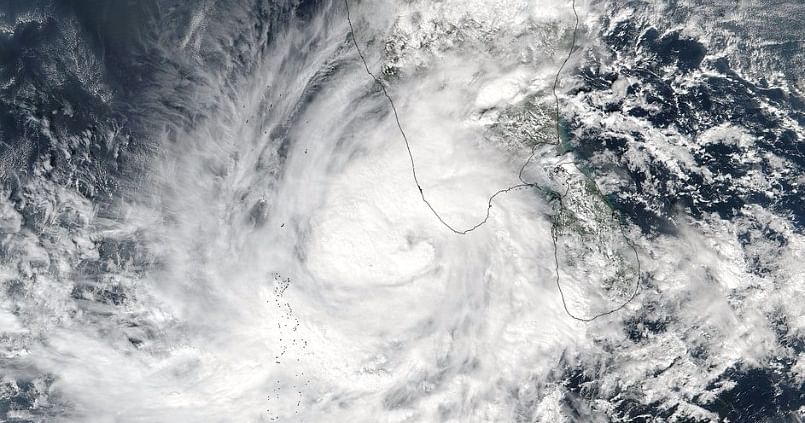Increasing temperatures in the north Indian Ocean is spurring more intense cyclones that spell trouble for India’s densely-populated coastal regions. And climate change is to blame, according to a new study.
“Rapid warming in the north Indian Ocean, associated with global warming, tends to enhance the heat flux from the ocean to the atmosphere and favour the rapid intensification of cyclones,” said the study authored by Vineet Kumar Singh and Roxy Matthew Koll of the Indian Institute of Tropical Meteorology. “The quick intensification means that it does not provide sufficient time for evacuation and disaster management on the ground.”
India is enveloped by two major parts of the Indian Ocean—the Bay of Bengal on the east and the Arabian Sea on the west. These two account for 6% of the total number of cyclones, but cause 80% of the global fatalities. The study highlighted how climate change causes an existential threat to India’s vast coastline while exposing gaps in its forecasting networks.
Koll cited the instance of Cyclone Amphan that made landfall in India in 2020. It took less than 24 hours for Amphan to intensify from a Category-1 cyclone (about 100 km/hour) to Category-5 (about 250 km/hour). The cyclone is estimated to have caused more than 100 fatalities and economic damages of over $14 billion. Since Amphan, at least seven other cyclonic events have hit India.
This is mainly due to the higher sea surface temperatures that provide a favourable breeding ground for the genesis of cyclones. The Arabian Sea, for instance, is 1.2-1.4 degree Celsius warmer now than it was four decades ago, the study said. “The north Indian Ocean is rapidly warming and has contributed to more than a quarter of the total increase in the ocean heat content globally in the last two decades.”
During the last four decades, cyclones originating in the Arabian Sea, particularly prior to monsoons, have become 40% more intense. Every fourth cyclone in the pre-monsoon season now intensifies to a Category-3 or more, the study said.
With such rapid intensification, forecasting the tracks and landfall of cyclones becomes challenging. There’s an urgent need in India to improve predictability of these cyclones by increasing the number of ocean moorings and buoys, the researchers said. “We need high-resolution data along the coastal zone, which is now scattered and restrictive due to regulation in the exclusive economic zones.”
